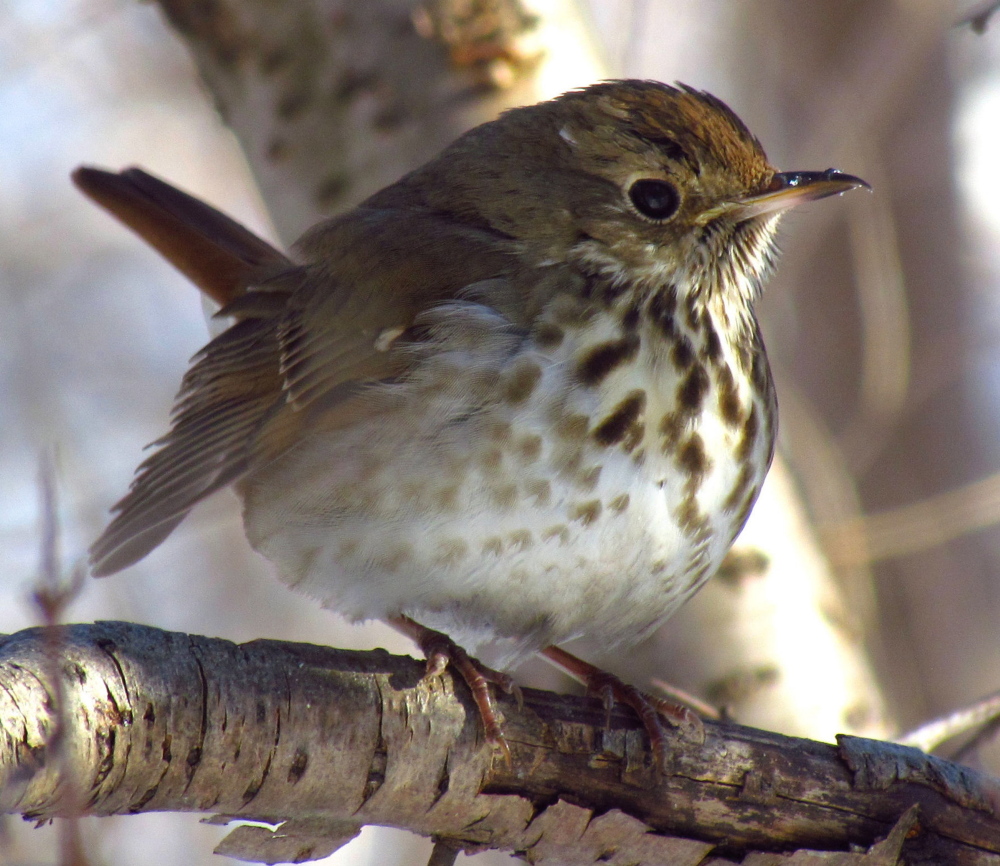The old fieldstone parsonage in Douglassville, Pennsylvania, lies on an acre of land between busy Route 422 and the Reading Railroad tracks along the Schuylkill River, lined with poison ivy thickets on one side and the waste lagoons of an oil processing plant on the other.
It is a warm, humid night in August, 1971, and even at 4 a.m. there is little breeze through the bedroom windows. An unusual silence pervades – no road noises, no trains, only the chirp of insects and an occasional bleat from the herd of sheep in the pasture between the north and southbound lanes of 422.
The sun has not yet risen when it begins: the notes of an ethereal flute, as mesmerizing as those played by the Piper at the Gates of Dawn in “The Wind in the Willows.” It’s the song of the hermit thrush, which transfixes all the animals, and which they are forced to forget, lest it make the rest of their lives seem too ordinary.
It’s a flute, yes, but a flute raised to a higher power, stating a theme Beethoven would have coveted, and a development with variations that even he might not have been capable of.
How long it went on, only Pan knows, because time had vanished, and with it the oil refinery, the highway and the polluted “sneaky creek” (Schuylkill) of the Pennsylvania Dutch. Only the insects and the sheep remained, providing nature’s proper accompaniment to the music.
Musicians with good ears, such as Boston composer Amy Beach, have transcribed the hermit thrush’s song; ornithologists have recorded and analyzed it, but no one will ever hear the Schuylkill’s bird again, because each individual’s song is different (although the score may remain the same), and the notes themselves may vary geographically.
Ever since that morning, I have agreed with French composer Olivier Messiaen that birds are the finest musicians in the world, even though I would not go so far as to declare them angels, as he does. One of my pet heresies is that man got the idea of making music from the birds. There is some evidence of that in the fact that the first flutes were made from hollow wing bones, perhaps as a form of sympathetic magic.
For quite a few years I was in the minority, in the good company of Walt Whitman, whose own hermit thrush consoled him on the death of Lincoln in “When Lilacs Last in the Dooryard Bloomed.” Ornithologists and other “nothing but” types talked of birds marking their territory or attracting mates with their calls, but little was ever said of music.
Now there is a new discipline known as zoomusicology, a branch of biology that studies the songs of birds and other animals with the emphasis on music.
A leading investigator in the subject, the aptly named composer Emily Doolittle, of Cornish College of the Arts in Seattle, spoke last month at Bowdoin College on the subject of animal songs and music. Prof. Doolittle investigates how humans have used animal songs in their music, and analyzes bird and other animal songs from both a musical and a scientific perspective.
She was involved in a recent study showing that hermit thrushes, like other modern composers, often base their songs on the overtone series. (The faint higher notes one hears after striking one string on the piano with the sostenuto pedal down.)
At the Max Planck Institute for Ornithology (Seewiesen, Germany), she and ornithologist Henrik Brumm discovered that the “musician” wren prefers singing perfect consonant intervals.
In a recent interview for “Audubon” magazine, she said, “We decided to measure the frequencies of each of the notes the bird sang. We found that not only was it singing octaves (an interval spanning eight notes) more often, it was singing perfect fifths and perfect fourths. Those are the three perfect intervals in Western music theory – but they’re not just cultural constructs, they’re actually the simplest interval ratios in sound, and there’s probably a shared physical and biological reason why people and birds gravitate towards them. The birds also preferred consonances (sounds pleasing to the human ear) and stayed away from intervals called dissonances (sounds that disturb us).”
Other recent studies have shown that finches who have had too much to drink tend to slur their songs, like people at a karaoke bar.
What I take home from this is that either men learned music from birds or that their songs have followed similar paths of evolution.
One further hint of optimism in this “winter of our discontent,”(Shakespeare, “Richard III”) is that the hermit thrush is not endangered, like so many other song birds, but actually seems to be increasing in numbers – maybe because of its habit of staying inconspicuous. The dawn chorus of birds here in Maine has been played diminuendo (dying away) in recent years. One can only hope that it portends the entrance of another god-like flute.
Christopher Hyde is a writer and musician who lives in Pownal. He can be reached at:
classbeat@netscape.net
Send questions/comments to the editors.



Success. Please wait for the page to reload. If the page does not reload within 5 seconds, please refresh the page.
Enter your email and password to access comments.
Hi, to comment on stories you must . This profile is in addition to your subscription and website login.
Already have a commenting profile? .
Invalid username/password.
Please check your email to confirm and complete your registration.
Only subscribers are eligible to post comments. Please subscribe or login first for digital access. Here’s why.
Use the form below to reset your password. When you've submitted your account email, we will send an email with a reset code.